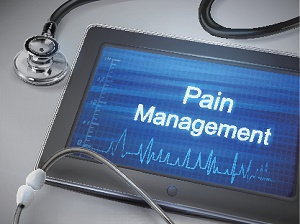 Over 47,000 people fatally overdosed on opioids in 2017, a surge that has caused poisonings to overtake motor vehicle crashes as the No. 1 cause of unintentional death among adults in the United States. In a joint effort to find solutions to a problem that has been growing for decades, the National Safety Council and other like-minded safety organizations are calling for broader and more consistent use of state Prescription Drug Monitoring Programs (PDMP). NSC and the Centers for Disease Control and Prevention also support publishing clear guidelines for prescribing opioid pain relievers.
Over 47,000 people fatally overdosed on opioids in 2017, a surge that has caused poisonings to overtake motor vehicle crashes as the No. 1 cause of unintentional death among adults in the United States. In a joint effort to find solutions to a problem that has been growing for decades, the National Safety Council and other like-minded safety organizations are calling for broader and more consistent use of state Prescription Drug Monitoring Programs (PDMP). NSC and the Centers for Disease Control and Prevention also support publishing clear guidelines for prescribing opioid pain relievers.
Chronic pain is a common medical issue in the U.S., and it can have many causes. Over 20% of adults report having chronic pain, meaning they experience pain on most days or every day, and that the pain has lasted three or more months.
Though opioids are commonly prescribed for chronic pain, they should not be the first pain treatment option. There is conflicting evidence that opioids are the best choice for treating chronic pain. For some people, they are the most effective option. But for most people, alternative pain treatment options are more appropriate than opioids and carry far fewer risks. Opioids should be used only after other non-addictive, less risky options have been tried and found unsuccessful. Studies have shown non-steroidal anti-inflammatory drugs (such as ibuprofen and naproxen) are just as effective as opioids.
The medical community is a vital partner in addressing the opioid epidemic. It’s imperative for all healthcare providers to keep their knowledge of both opioid and non-opioid pain management techniques current through continuing medical education (CME).
Before anyone begins long-term opioid therapy, careful consideration must be given to evidence-based opioid prescribing. Doctors should provide:
When it comes to prescribing opioids, there is no such thing as a safe maximum dose. Doses greater than 20 morphine milligram equivalents per day increase the risk of overdosing. Doses greater than 100 MME increase the risk even more. In fact, those on a dose of 100 MME or greater are nine times more likely to overdose than their low-dose counterparts. This MME calculator is a useful tool for patients on long-term opioid therapy.
Mandatory PDMP use is a critical component in the fight against opioid misuse and overdose. PDMPs are state-run, electronic databases designed to monitor the prescribing of controlled substances and to identify individuals who are at high risk of using opioids for non-medical purposes. In some states, these are mandatory and require physicians to participate; other states have voluntary programs.
Supporting data includes:
Through the Physician Speakers Bureau program established by NSC, doctors are available to share best practices for pain management with other medical professionals. Learn more about the experts or request a speaker.
There are no items in your cart